Four works will be on offer to benefit the non-profit organization Topical Cream, including artist Juliana Huxtable’s artwork, Infertility Industrial Complex 1, in the Contemporary Art Online sale. Sotheby’s sits down with both Huxtable and Lyndsy Welgos, Executive Director of Topical Cream, to discuss Huxtable’s piece and Welgos’s leadership.
A rtist Juliana Huxtable is a modern-day Renaissance woman. She works as a visual artist, writer and DJ – a juggling act that gives her the freedom to experiment with and crystallize her ideas through a diversity of media.
Born and raised in Bryan-College Station, Texas, Huxtable relocated to New York in the mid-aughts to attend Bard College. There, she studied literature and gender studies, which now serves as a theoretical framework for her practice.
Graduating Bard in 2010, Huxtable migrated down the Hudson to settle in New York City, accepting a position with the American Civil Liberties Union (ACLU). In the city, Huxtable inaugurated her now widely regarded Tumblr; online, she became known among an inclusive, progressive subsection of the art world – and in this space, her artistic career began to flourish.

Soon after, she joined the artist collective House of Ladosha and experimented formally – quickly cementing her place in New York’s art scene. Thus, in 2015, Huxtable achieved both institutional and international recognition at the New Museum’s Triennial, where her art was the centerpiece. She has since performed and exhibited at a myriad of renowned locales, such as MoMA PS1, the ICA, London, the Walker Art Center and the Museum of Africa Diaspora.
It was also at House of Ladosha that Juliana was introduced to Lyndsy Welgos, the Executive Director of Topical Cream – a non-profit organization that supports “women, femmes and gender-nonconforming individuals in Contemporary art.”
So in 2020, when Welgos decided to sell a constellation of contemporary artworks to help fund Topical Cream in Sotheby’s Contemporary Online sale, she immediately thought of Huxtable’s work. Now, Huxtable will consign one of her monumental pieces, Infertility Industrial Complex 1 (recently exhibited at Reena Spaulings Fine Art), in tandem with artworks created by Jamian Juliano-Villani, Korakrit Arunanondchai and Paul Sepuya, to support Welgos’s cause. This will be the first time that Huxtable’s artwork comes to auction.
Here, we sit down with Huxtable to discuss the inspiration behind the piece, as well as with Welgos, to learn more about the critical work of Topical Cream.
Juliana Huxtable
Sotheby's: Can you describe your current artistic practice? How has your practice evolved since creating Infertility Industrial Complex 1?
Juliana Huxtable: Highly multifaceted – my practice evolves with ideas. It's a constant shift in what I'm thinking about or working through. This work [Infertility Industrial Complex 1, 2019], in particular, is part of a much larger body of work that is not yet finished. Previously, I think each show has felt like a somewhat full iteration of the idea or the conceptual world.
S: Do you feel that this series is still ongoing?
JH: I think in my last few shows, I have felt a sense of, okay, the idea is done, it's out there. This work, I think ultimately, once it's done, it will cover the most in terms of scope and in terms of the range of different works. Also, the amount of time it covers will probably be my largest, at least up to now.
It started with just a set of ideas or a set of questions that were relatively limited, and it has expanded into this whole concept of human-animal trans-species, inter-species genetic modification, furries, etc. It's turned into a whole world where I am thinking about the human-animal encounter, which activates lines of inquiry that are really exciting to me right now. And so, it's a lot of questions that I've wanted to think about that are now being processed.
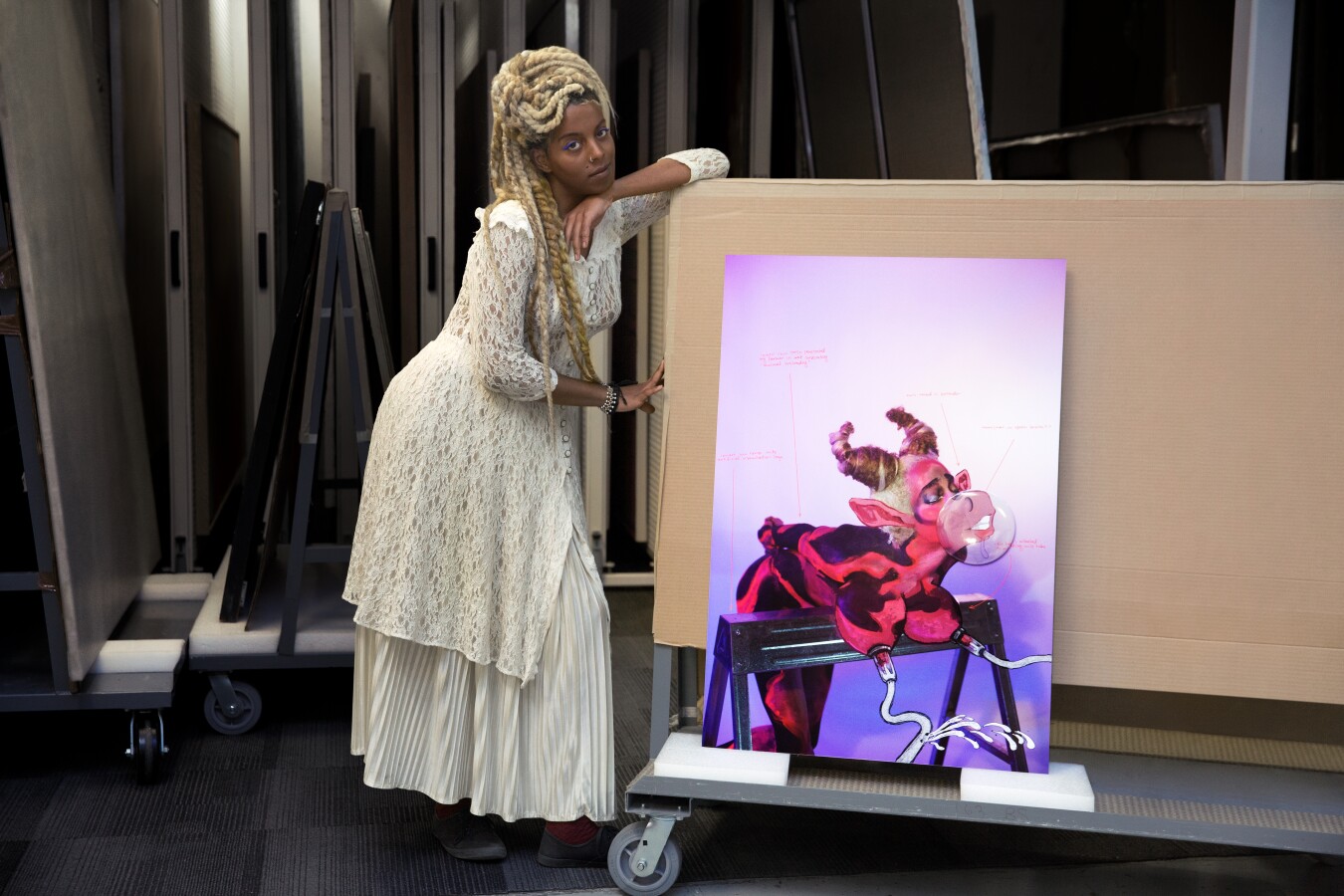
S: Regarding process, as you are also a writer, do you find that you write first and then create visual art from that?
JH: I write and sketch. I will read something, and that will spark a response. This whole body of work initially started from when I did a two-person show with my friend Carolyn [Carolyn Lazard]. And the gallery/curator we were working with decided to prompt it, because we're both into science fiction and speculative fiction as a way of thinking through what social issues, political issues, etc.
She suggested that we read Octavia Butler's Xenogenesis trilogy, which is about a colonial encounter between humans that had been preserved by these aliens – the aliens essentially save earth from self-annihilation or annihilation at the hands of human beings. They step in to intervene, and they claim that they're doing it from a place of ethical benevolence towards the earth.
But reading this really just sparked my interest in a confrontation between species, and then inter-species ideas. Genetic mixing between different species. It started off in a SciFi context, but then through the process of writing about it, it shifted into things that are more adjacent to contemporary non-speculative fiction.
Which lead me to consider: what are the ethical frameworks? How do people advocate within the context of human beings; how do we advocate for a marginal or oppressed population to then be given a set of rights or recognition?
S: How did you begin creating art?
JH: I always wanted to be a painter and a poet, starting from when I was a kid. I think I was three when I called myself an artist for the first time. I've always said that, so it was less an aspiration. I identified as such when I was younger, and then I knew I wanted to be a poet, and I loved drawing, painting and poetry.
In college, I actually abandoned art; I took a few classes. I generally felt alienated from the way that they were teaching art at Bard. And I'm glad that I did because by abandoning it, I entered the world of literary theory, cultural criticism, gender theory, postcolonial theory. It was both a way to learn about the world in the materialist historical sense, but also to be introduced to the play of concepts and language on a different level. And I think that that's influenced me and framed how I think.
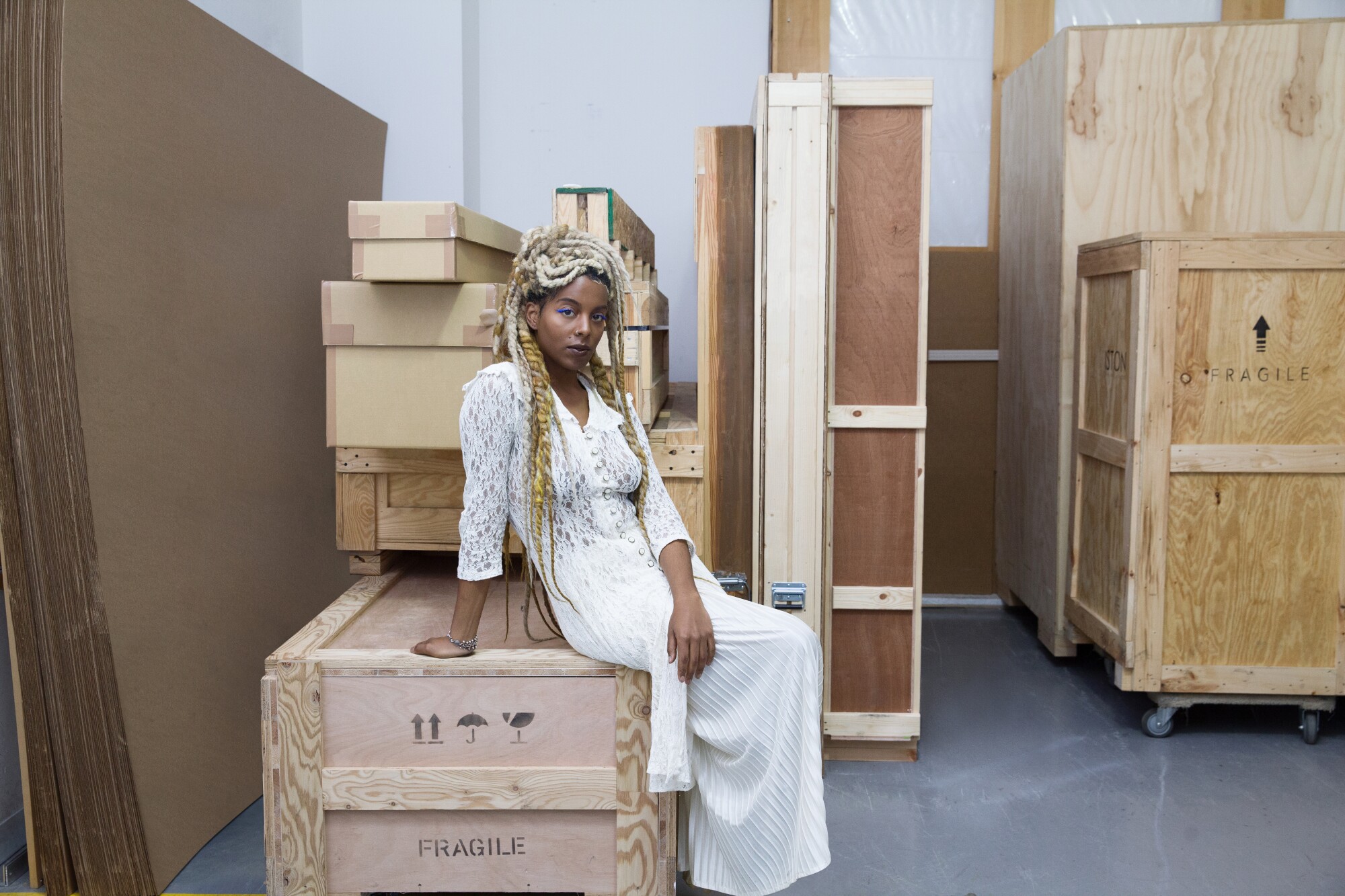
S: If you could give your younger self a piece of advice, what would you advise?
JH: To trust your weirder instincts, which I think I generally did, but – I'm not one for having regrets – but I would say, don't second guess yourself. Plus, the things that ostracize you are generally going to come back as some sort of benefit later in life.
S: You are based in both Berlin and New York. Do you create different art now that you're in Berlin part-time as well?
JH: I think I feel less social agency in Berlin. And so, I think that inevitably influenced my work and will continue to in the sense that I really can be in my head and in my ideas a bit more.
In New York, you're constantly going. I thought that when I moved to Berlin, I'll turn into the type of artist that just sits in my studio and paints all day. But that didn't happen. I do sit and read and write and sketch – it's really a conceptual playland.
I read a lot in New York, but it's very condensed and intense. It's as if I'm locking myself away in a studio for these amounts of time because I'm working on a show, and I want to solve this conceptual world or map. I want to be able to plot it out and then dive into making work. Whereas in Berlin it's a part of the way that I live, I think a bit more.
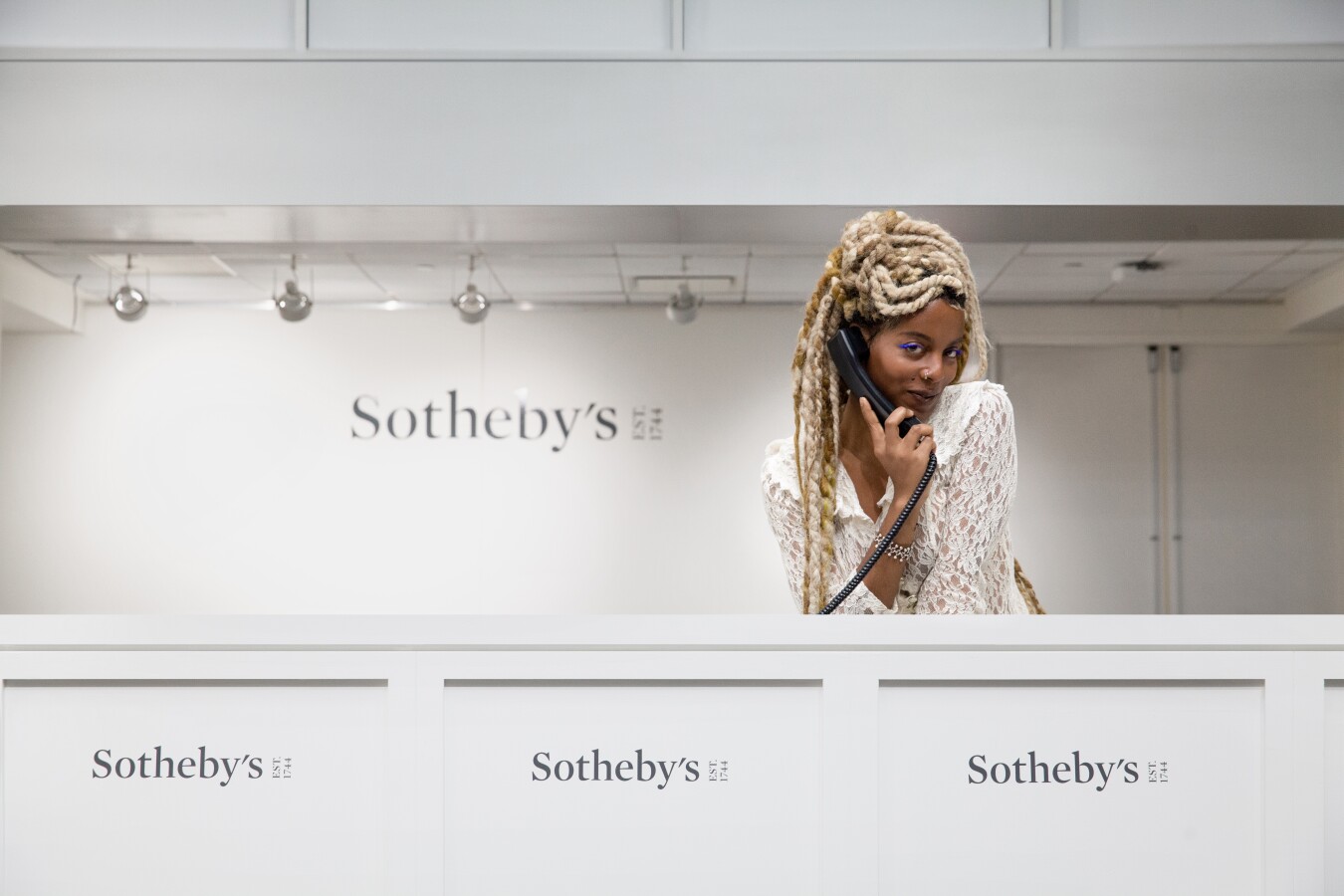
S: What do you read in Berlin?
JH: I'm a bit of a theory head – or historically, I have been. Normally, that is what I'm reading, where it's like: Okay, I'm thinking about fashion in this specific context. Let me get into the history, let me get into this. Or, what's the interesting theory about fashion? How does this influence? Or, how do I form my view in relationship to this?
Lately, I've been reading a lot more fiction and poetry. And, in terms of Infertility Industrial Complex, it was a distraction. I was watching Toni Morrison's lectures. And they had an interview where the person interviewing her brought up the bestiality in Beloved.
As I was already in this world, where I was visualizing the human-animal encounter, I immediately went to purchase the book. I had 40 minutes before the bookstore near my house closed. So, I left my studio, caught the bus, bought Beloved – and then it really influenced my writing because it's folklore.
S: Do you have a museum that you go to for inspiration?
JH: I go to MoMA a lot. I love MoMA. It does it for me. Every time I go to MoMA, I'm really happy.
S: Are you ever inspired by other contemporary or historic artists?
JH: I really love Kara Walker. I love Chris Kraus, Kathy Acker, Coco Fusco, Alex Rivera and K8 Hardy, as well.
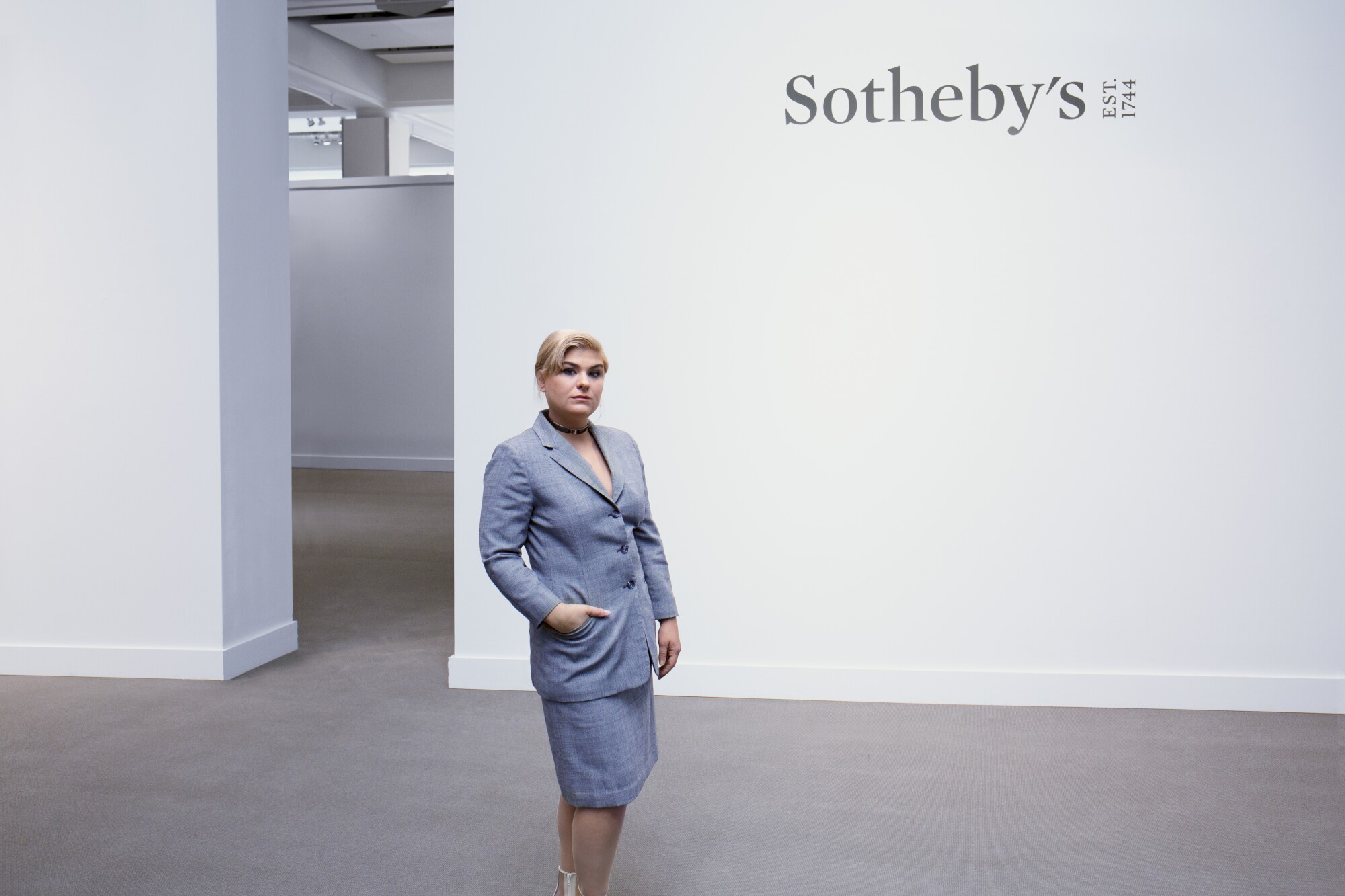
Lyndsy Welgos
Sotheby's: Would you be able to provide background on your non-profit Topical Cream?
Lyndsy Welgos: Institutional sexism is everywhere in the art world. Problems that activist organizations like the Guerilla Girls were drawing attention to have barely improved – and that was four decades ago. After years of working as an artist in NYC surrounded by an incredible community of women and gender non-conforming artists making powerful work, I knew there was a possibility of something like Topical Cream existing, a platform for the kinds of intellectual dialogue and critical discourse that we consume daily but often felt excluded from.
Initially, I founded Topical Cream to create a more equitable dialogue. Over time, we've developed from publishing and nightlife into a non-profit organization with a very active and dynamic board, as well as artist editions and collaborations with organizations. If the Guerilla Girls had a Tumblr in 2020, it wouldn't be so different from Topical Cream.
S: What are the different ways that you support your artists?
LW: Topical Cream supports artists through critical long-form publishing, and public interventions like the FREE SALE shop and our takeover of Eyebeam, Artists Space and MoMA PS1 – all our programs are free and open to the public.
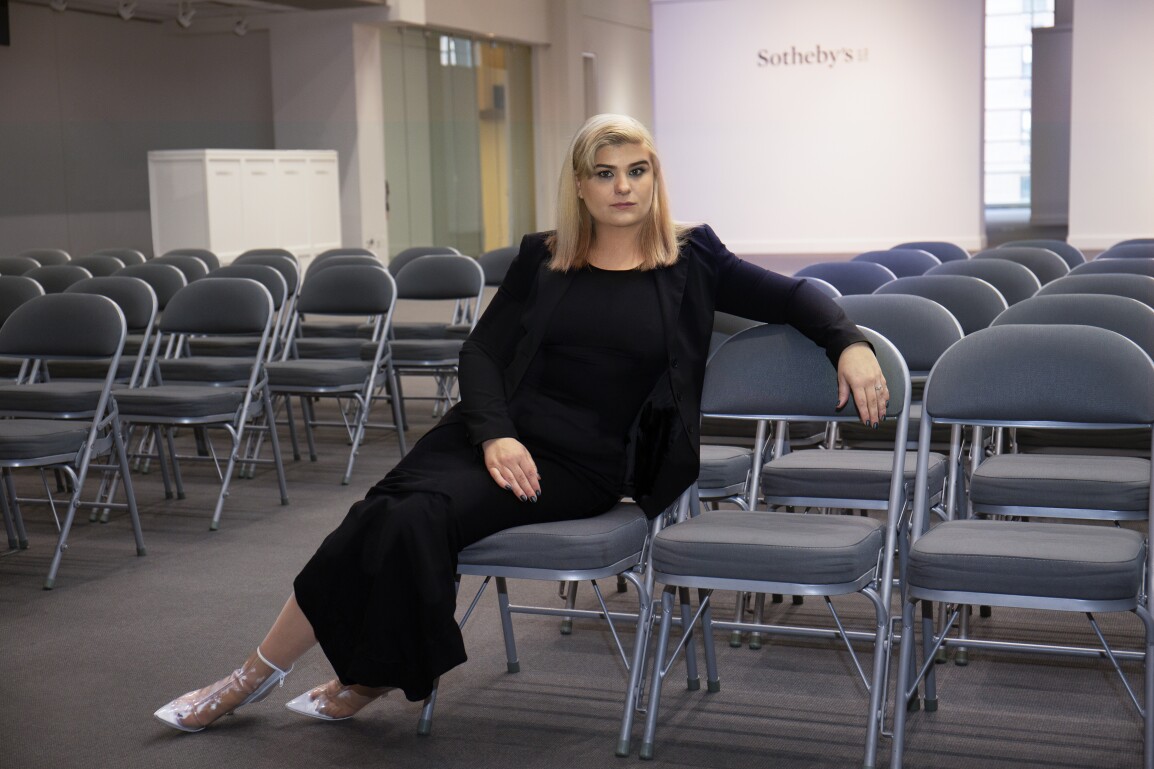
S: How long have you and Juliana been working together?
LW: I met Juliana on the set of a House of Ladosha photo shoot in 2012, and we've worked together ever since. As the Executive Director of Topical Cream, I am honored that a globally recognized artist with such a unique and timely vision is directly supporting the organization by donating such a powerful, iconic artwork to our Sotheby's auction. One part of Juliana's genius is that she's able to communicate a subversive message, through her wit and sense of humor in a way that shows she has true mastery of the message. You can really see the influence of artists like Kathy Acker and Coco Fusco on her work. As Juliana's friend, I am constantly in awe of her, but this moment, in particular, feels special.
S: Given what is happening in the world right now – politically, environmentally, etc. – why is art important, and what is the role of artists?
LW: From Topical Cream's perspective, art and politics are inextricable. The artists we feature are often those whose work contains an activist ethos – whether overtly or not. Some important politically-engaged artists we've worked with include Aria Dean, Dese Escobar, Theresa Chromati, Venus X, Lynne Tillman and Mickalene Thomas.
S: Collaborations are not uncommon for you and Topical Cream. What is it that attracts you to working with a company like Sotheby's?
LW: One of the ways I hope to fulfill our mission of creating a more equitable dialogue is through the art market. Smart collectors use auctions to express their values. Buying works by women and artists of color is a powerful way of signaling to the world that you believe in an inclusive and diverse society. Partnering with a historic and influential auction house like Sotheby's has been a dream, and with the support of someone like Harrison Tenzer (Head of the Contemporary Art Online Sale), who took a chance on us, we will be able to publish more extensively and provide more free programming than ever before.






